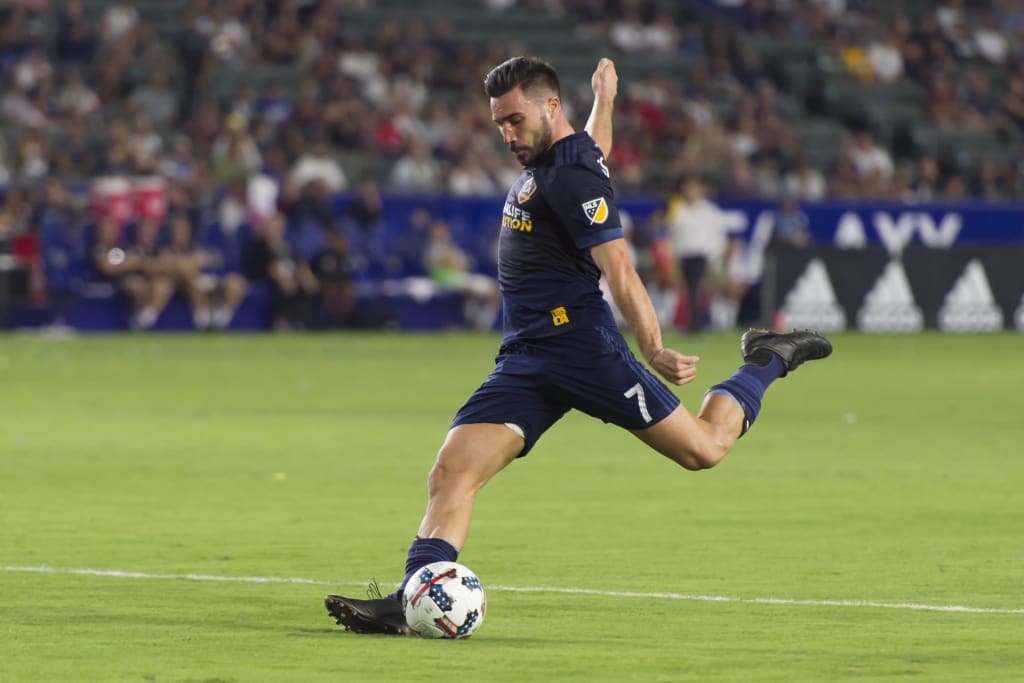How Soccer Players Can Avoid Hamstring Injuries
Hamstring strains and pulls are the most common type of injury for soccer players. We've gathered some important information on how soccer players can avoid hamstring injuries both on and off the field.

We all know soccer players ham up injuries in an effort to sway the ref to issue a yellow card. However, injuries are also a real part of playing soccer. Injuries in soccer are very common because it is both a contact sport and a highly cardio intensive sport. The hamstring muscle is used nonstop when playing soccer, and hamstring strain is one of the top muscle injuries most soccer players deal with. While many coaches focus on hamstring stretching as a top priority, there are specific ways to avoid hamstring injuries that people may not be aware of. The Journal of Sports Medicine has done ample research on injury prevention for this muscle group and identified risk factors. The best ways to prevent hamstring injuries is to start with being prepared.
Warming up before practice, games, conditioning, and strength training is essential for protecting yourself from soccer injuries anywhere in your body, let alone a hamstring injury . When you spend most of your day not using your hamstring muscles, they can become tight. If you go straight into hamstring exercise without warming up, this is when hamstring pulls occur because your hamstrings are shocked into action. Warming up helps to prevent hamstring injuries by loosening the muscle group and transitioning the hamstrings from sedentary to active motion.
Cooling down after a workout, practice, or soccer game works for soccer players who want to avoid injuring their hamstring in a similar way to the warm up. Immediately after using your hamstring muscles for a long period of time, hamstring pulls can occur, because once your body registers that you are transitioning back into a sedentary state, your muscles immediately tense up.
Another main reason soccer players are continuously pulling their hamstrings is because they will warm up and cool down, but they will play soccer for hours and not stretch their hamstrings throughout the game or practice. To avoid hamstring injuries, players must stretch their hamstrings continuously, as their hamstrings work hard during this rigorous strength training and need to be properly taken care of. Hamstring pulls are very common in soccer because this sport requires intense hamstring exercise at all times. Without extra consideration to this muscle, injuries are likely to occur.
Soccer players also spend a lot of their time strength training when outside of practice and soccer game play. During this time, many coaches and players may think that strengthening the hamstrings through heavy weight training is necessary in order to avoid hamstring injuries on the field. However, there is a specific balance needed between strength training and rest to avoid hamstring pulls and keep every single leg of every single player safe from injury. Decreasing stress on the hamstrings while in the weight room can be most beneficial in the long run.
Eccentric training is a specific kind of training which can help to avoid hamstring injuries for soccer players. Eccentric training involves focusing on the down motion of weight training as opposed to the lifting motion. The down motion, when doing leg curls or knee extensions for instance, is what we call the eccentric actions, and this is when the muscles contract and lengthen. By focusing on this motion, it allows the muscles to strengthen even more than before, and it can help soccer players and all athletes avoid injuries.
Pre-season conditioning is another great way for soccer players to avoid hamstring pulls, because if a player is in shape once they get on the field and start getting in contact with other players and the ball, their hamstrings will be strong enough to handle the intensity. This conditioning will prepare their hamstrings for the rigorous game play, which is when hamstring pulls happen most frequently.
One of the most common reasons serious hamstring injuries occur is because soccer players will feel a slight strain in a single leg and they continue to play through the pressure. There needs to be more education given to players by their coaches and trainers, so they know how important it is to stop playing at the first signs of strain. Otherwise, they can end up sitting out for the whole season when a serious hamstring injury occurs.
At the first sign of strain, in order to avoid more serious hamstring injuries, soccer players should apply both ice and heat to the strained hamstring to allow the muscle to calm down and rest. If the player can catch the strain before it becomes more serious, the muscle should be able to heal quickly. Ice and heat are easy ways to allow healing. However, if the hamstring strain is played through and ice and heat are not applied, this is when things can become more serious and ice and heat may no longer help.
Compression of the hamstring is necessary if you feel that the hamstring is strained or if you have a minor hamstring injury and want to prevent is from getting worse. Using a compression bandage will restrict motion in the leg and keep the muscle in place, so that the muscle has time to heal. A compression wrap can also be used during game play as a preventative measure. They make compression wraps out of waterproof, flexible material that slip up around the thigh, allow movement, and will keep the hamstring from pulling or stretching too far out of place.
Lastly, to avoid hamstring pulls and injuries, you must use proper strengthening techniques throughout the offseason, preseason, and during gameplay to keep the hamstrings ready at all times. Unlike the upper body, the hamstrings require specific attention for soccer players because they are constantly being utilized for kicking the ball, running the field, and during contact with players. In order to avoid strain and injury, work with your coach and trainer to strengthen your hamstrings in very specific ways according to best practices. They should be able to tell you the exact techniques to use such as soccer footwork drills or workout regimens.
As a soccer player, your hamstring muscle is the most important tool you have, aside from your high top soccer cleats or shin guards. Be sure to take care of it before it is injured as opposed to after.
About the Creator
Morgan E. Westling
Avid Reader, Freelance Writer/Editor, and Lifestyle Blogger






Comments
There are no comments for this story
Be the first to respond and start the conversation.